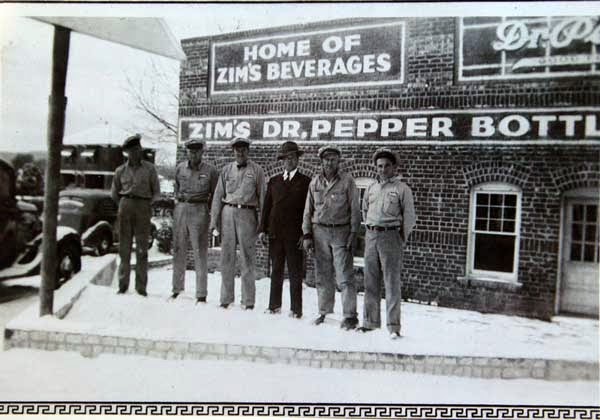Gordon Cotton Gins
Profited From Perfect Storm
By Jeff Clark
“Times were hard for the family,”
Dovie Gailey Hunt wrote of her childhood, “so dad raised cotton. When the first
bale was sold, we all went into Gordon on the cotton in a wagon. I remember that
long ride.” The Gaileys were traveling from the Harding Place at Simms Valley Erath County Palo Pinto
County
“We did not take our Model T Ford
with us whenever we (went) to Gordon. Then when we got there, we sold the cotton
and Dad took me to see the cotton ginned, etc. Now he had money to buy
gasoline, so he went and got our car so we would have a way to go to town instead
of all riding in the wagon.”
Five Gordon
cotton gins once served several counties. These included the Wilbar Brothers,
Huffaker, Terry and two others. Over 19,000 bales were ginned in Gordon one
year, according to an unconfirmed report.
“I remember
getting up early one morning in the late 1920s and traveling with Dad to the
Terry Gin,” R. N. “Skeeter” Pierce said. The Pierce Place was at Lake Creek, about
nine miles north-northwest of Gordon. The mule-powered trip took an hour.
Farmers
knew to get in line at the Terry Gin early. “Some farmers who lived several
miles from the gin would drive in at night, catch a few hours sleep in their
cotton and be first in line to get their cotton ginned,” Pierce said. “This
allowed them plenty of time to sell their cotton to local merchants, shop a bit
and get home by dark.”
Skeeter was
then four-years-old. “My dad insisted on showing me just how the gin worked.
The cleaned cotton was compressed, then wrapped in burlap and steel bands. We
picked up the finished bale and carried it to the wagon yard where most cotton
was stored until shipment by rail.” The cotton platforms and cattle yards were
located west of Gordon’s train depot.
Cotton
delivered, the Pierces bought groceries at Oden Mercantile and then a large block
of ice before heading back to Lake Creek. “Dad carefully wrapped the ice in an
old quilt and covered it with a wagon sheet (canvas cloth),” Pierce said. “I
knew we would have homemade ice cream the next day and iced tea.”
Gordon was
blessed to have four creeks running through its cotton ginning trade area. Palo
Pinto Creek flowed a little over a mile to the north, Lake Creek eight miles
north of that, Barton Creek a mile and a half east of Gordon and Sunday Creek still
farther east and south. These rich creek valleys were then fertile. “My mother
said as a kid she picked cotton near Barton Creek that was so tall a youngster
couldn’t reach the top of the cotton stalk,” Pierce said.
Farm
families were large back then, each able-bodied member helping out with the harvest.
“Stories were told of young men who could pick four to five hundred pounds of
cotton in a day,” Pierce said. “That day was usually dawn till dusk.”
Jim Rice,
John Oden, John Harlin and Eaton-Blewett Mercantile bought cotton, “but most of
the cotton money went to pay off the yearly debt the farmer owed the
businesses,” Pierce said.
All the cotton that farmers wrestled
into town wasn’t immediately ginned. Some was stored un-ginned in big barns, processed
later when prices rose. Farmers raised oats to feed their mules and horses, and
a lot of wheat, but cotton was their core cash crop.
The Pierces
raised 15 acres in cotton on their place. Skeeter’s older brother Red Pierce
told of their dad sitting down on the bed with tears in his eyes after a hail
storm wiped out their crop, saying “Well, I’ll have to ask John Oden to carry
us another year.” Meaning the Pierces would charge everything for another full
year, Skeeter added.
Boom years, cotton was like gold.
Bales could sell as high as 50 cents a pound in the late teens and 1920s. “Two
or three bales could buy a Model T Ford,” Skeeter Pierce remembered.
The boll weevil killed cotton
production in these parts in the 1920s. The last gin, the Terry Gin was shut
down and finally scrapped in the early 1930s. Today cotton gins in Gordon , Texas
The
late Dovie Gailey Hunt took a few minutes and wrote down memories from her
life. Because she made that time, less than we spend watching one TV movie, we
have special insight into our history. Special thanks to Dovie Gailey Hunt, R.N.
“Skeeter” Pierce, Shanon Hunt, J. B. Harlin and the amazing Gordon Community Library
& Museum (once again).

No comments:
Post a Comment